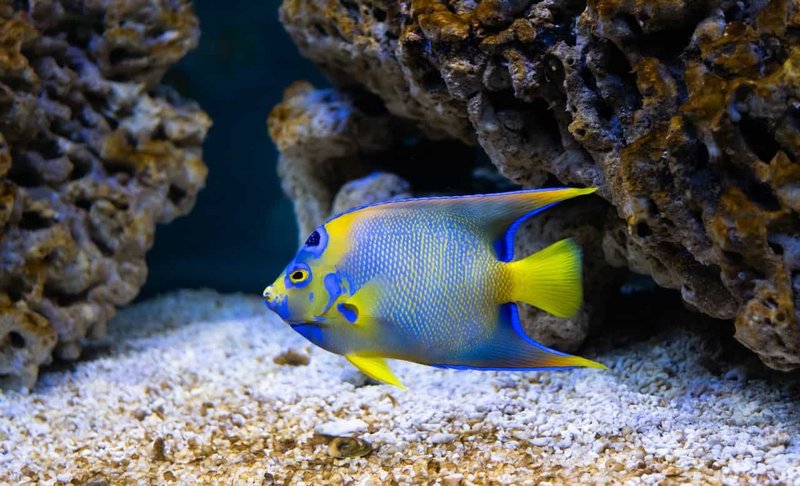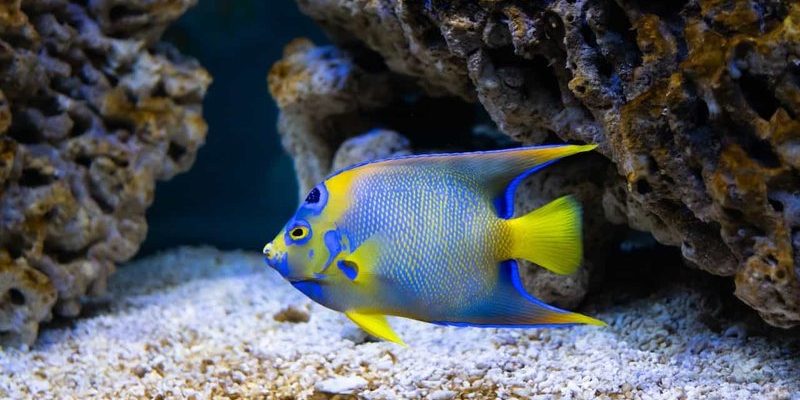
Just like you wouldn’t run up to every dog you see on the street, interacting with angelfish requires some knowledge and respect for their nature. Picture it like this: approaching a shy pet cat. You wouldn’t pounce on it, right? Instead, you’d take a gentle approach. The same goes for angelfish. In this article, we’ll explore how to safely interact with them, what to keep in mind, and why ensuring their well-being is just as important as your own.
Understanding Angelfish Behavior
Angelfish are known for their distinctive shape and stunning colors, but there’s more to them than meets the eye. These fish are generally peaceful, yet they have their quirks. They can be territorial, especially during breeding season. If you think of a young angelfish as a teenager, it’s a bit moody and might not always want to share its space or friends.
When you first introduce yourself to an angelfish, slow and steady wins the race. If you approach the tank too quickly or make sudden movements, they might dart away or hide. Think of it like meeting someone shy at a party; you wouldn’t want to scare them off by bursting in with high energy. Instead, try to move calmly and let them get used to your presence.
If you’re keeping angelfish in a tank at home, watch how they react when you’re nearby. They’ll often become curious, swimming around to check you out. This is a good sign—they’re comfortable with your presence. But remember, every fish has its own personality. Some may be more adventurous, while others prefer to stay hidden.
Creating a Safe Environment
Before you even think about interacting with your angelfish, you must ensure their surrounding environment is safe and comfortable. A well-maintained aquarium is like a cozy home; it needs to be clean, filtered, and properly heated. Angelfish thrive in a warm environment, ideally between 76°F to 82°F (24°C to 28°C).
You’ll also want to provide plenty of hiding spots and plants in the tank. This allows your fish to feel secure and offers them places to retreat if they feel overwhelmed. Think of it as furnishing a room with comfy couches and safe spaces—they’ll appreciate it!
Keep an eye on water quality, too. Regularly testing the pH, ammonia, nitrites, and nitrates will help you maintain a healthy environment. Clean water is crucial for their wellbeing, and it can significantly affect how they respond to you when you approach their habitat.
How to Interact with Angelfish
Now that you’ve set the stage with a safe environment, how do you actually interact with your angelfish? It’s all about timing and technique. Start by simply observing. Spend time near the tank, and watch their behavior. This will help them get used to you and feel more comfortable.
Once they seem relaxed, you can try gently tapping the glass to get their attention. It’s akin to giving a little wave; it lets them know you’re around without startling them. If they respond positively, you can take it a step further by offering some food. Just make sure to provide appropriate fish food, like flakes or pellets specifically designed for angelfish.
Here’s the thing: feeding time can be a magical moment. As your fish swim eagerly toward the food, it’s a chance for both of you to connect. Just remember to feed them in moderation—overfeeding can lead to health problems.
Signs of Stress in Angelfish
As you interact with your angelfish, it’s crucial to be aware of signs of stress. Recognizing when they’re uncomfortable can help you adjust your behavior accordingly. For instance, if your fish hide frequently or display erratic swimming patterns, they might be feeling stressed.
Another red flag is if they start to lose color or have visible clamped fins. You might think of them as a shy person who stays quiet and withdrawn when uncomfortable. If you notice any of these signs, it’s essential to give them space and reassess their environment.
With time and patience, you’ll learn the nuances of your fish’s behavior. It’s a rewarding experience to grow alongside them, understanding their needs and adjusting how you interact.
Potential Risks of Interaction
While angelfish are generally safe to interact with, there are some risks to consider. First off, you’ll want to make sure you wash your hands before dipping them into the tank. This is crucial because soaps or chemicals can harm the fish. Just think of it like cleaning your hands before cooking; it’s a good habit to get into!
If you have other pets—like cats or dogs—be mindful of their curiosity. They may see the fish as a toy, which can stress out your angelfish. Always supervise interactions if there are other animals around.
Also, keep in mind that while angelfish can be friendly, they can also be territorial. If you have multiple fish in a tank, some aggression may occur. It’s important to monitor their interactions and ensure no one is getting bullied.
Choosing the Right Companion Fish
If you’re thinking about adding more fish to your aquarium, you’ll want to choose companions that get along well with angelfish. Some good options include tetras, rasboras, and certain types of catfish. Just remember: not every fish will be compatible, and some might provoke aggression.
When introducing new fish, do it slowly. Watching how your angelfish react to new companions is essential. It can be a bit like introducing a new friend to your social circle—you want to ensure everyone vibes well together.
Here’s a tip: make sure any new fish are roughly the same size as your angelfish. This helps prevent bullying and helps ensure a peaceful community in your tank.
Interacting with angelfish can be a delightful experience when done safely and mindfully. By understanding their behavior, creating a safe environment, and recognizing signs of stress, you can build a beautiful bond with these remarkable fish.
As you embark on this aquatic journey, remember that patience is key. It’s not just about the moments of interaction but also about fostering an environment where your angelfish can thrive. With time, you’ll gain insights into their personalities and develop a unique relationship that deepens your appreciation for these stunning creatures. Happy fish-keeping!

